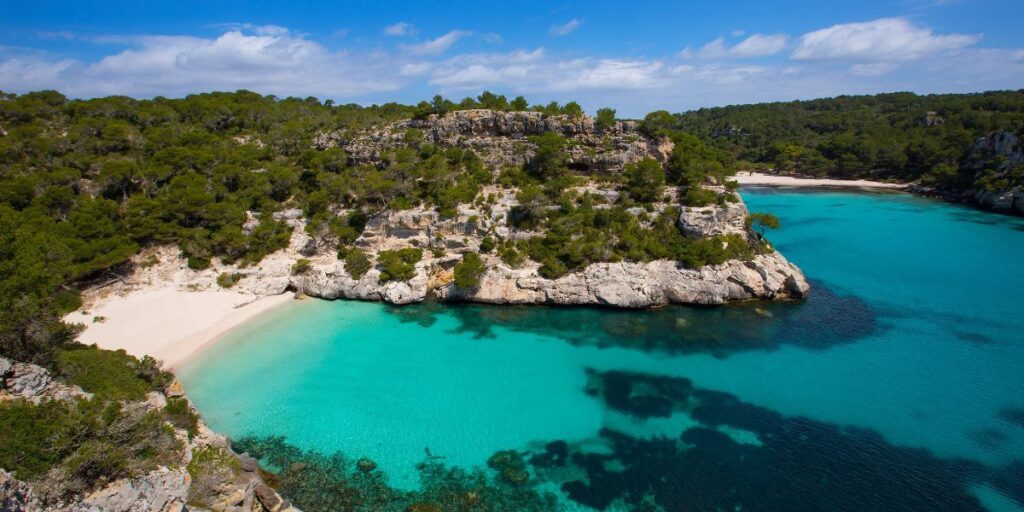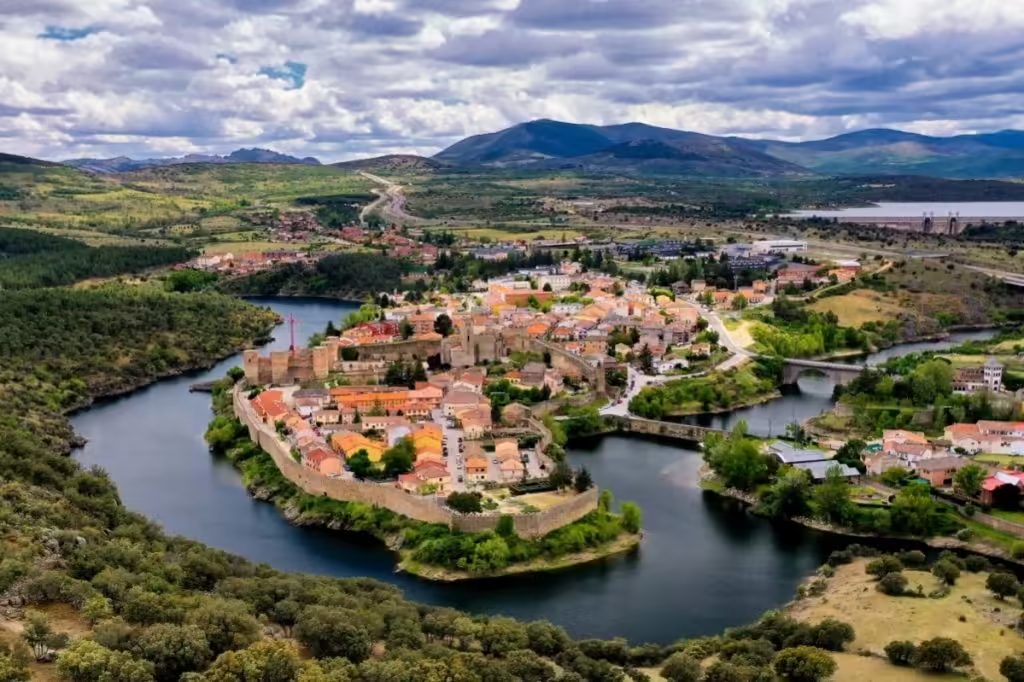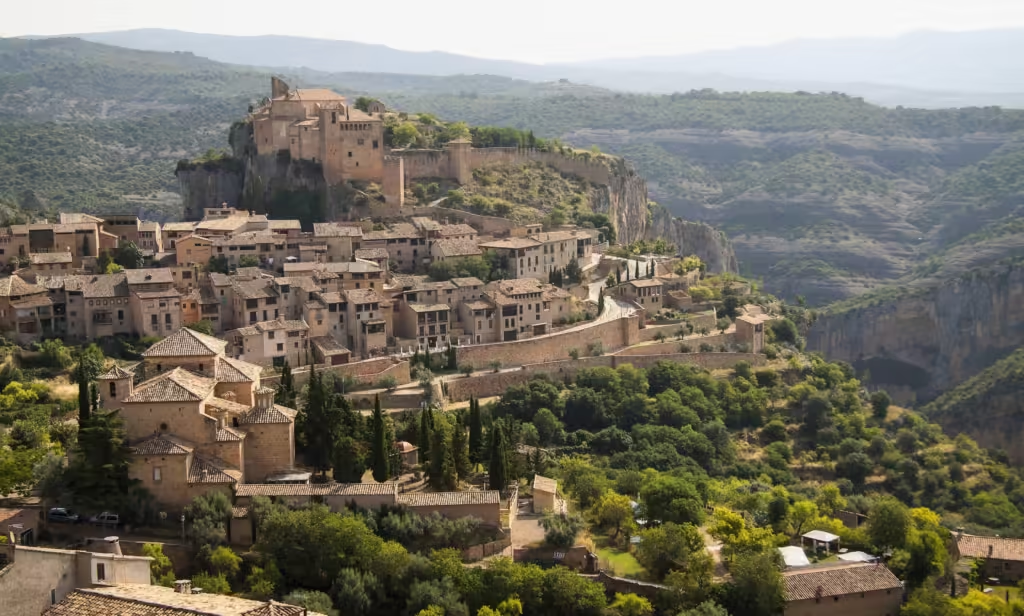Menorca, the tranquil gem of Spain’s Balearic Islands, is a dream destination for travelers seeking pristine beaches, serene landscapes, and a rich cultural heritage. Often overshadowed by its more famous neighbors Mallorca and Ibiza, Menorca delights visitors with unspoiled coves, historic towns, and laid-back island life. This comprehensive Menorca travel guide will help you explore the top attractions, savor local cuisine, and gain insider tips to make the most of your stay.

Table of Contents
Introduction to Menorca
Menorca, also known as Minorca, is the second-largest of the Balearic Islands and is situated in the western Mediterranean Sea. It is a UNESCO Biosphere Reserve recognized for its commitment to environmental sustainability and unspoiled natural beauty. Mahón, the island’s capital city, and Ciutadella, the former capital, serve as historical hubs showcasing Menorca’s past. Traditional architecture, medieval streets, and lively markets reflect the island’s cultural heritage.
Menorca’s gentle pace of life extends an invitation to slow down and appreciate its breathtaking coastlines and serene interiors. The island holds a unique mix of influences: from the British occupation of the 18th century to the local Catalan customs that shape its culinary and cultural identity today.
Top Reasons to Visit Menorca
Idyllic Beaches
Menorca boasts over 200 kilometers of coastline, dotted with more than 70 beaches, many of which remain unspoiled.Cultural Heritage
The island’s megalithic monuments, Talaiotic sites, and historic towns highlight Menorca’s ancient origins and diverse influences.Outdoor Activities
From hiking the Cami de Cavalls to sailing around hidden coves, Menorca provides endless ways to connect with nature.Family-Friendly Atmosphere
With calmer vibes than neighboring islands, Menorca is a welcoming option for those traveling with children.Gastronomy
Local Menorcan cheeses, the famous lobster stew (caldereta de llagosta), and gin distilleries offer delectable culinary experiences.
Best Time to Travel
The best time to visit Menorca usually spans from late spring to early autumn. May and June are pleasant and less crowded, making these months ideal for travelers seeking mild weather. July and August bring warmer temperatures and bustling tourist activity, which is perfect for beach lovers. September and early October still offer warm seas and thinner crowds, creating a balance between enjoyable weather and fewer visitors.
Winter in Menorca is mild, but many businesses close during the low season. However, if you prefer hiking and exploring historical landmarks without the heat, November to April can be peaceful, with fewer tourists around.
Getting to Menorca and Around
Flights to Menorca
Most international visitors arrive at Menorca Airport (MAH), located near the capital city of Mahón. Direct flights from major European cities are more common during the summer, though year-round connections exist from mainland Spain.
Ferries and Boats
Another option is to travel by ferry from Barcelona, Valencia, or Mallorca. Ferries generally operate year-round, but schedules vary according to the season. This method allows you to bring a car, which can be advantageous for exploring the island at your own pace.
Transportation Options
Car Rental: Renting a vehicle is one of the best ways to explore Menorca. It gives you the freedom to discover secluded beaches and rural towns without relying on public transport schedules.
Buses: Public buses connect major towns and some coastal resorts, though routes can be limited outside peak season.
Taxis: Taxis are readily available, but fares might add up quickly if you plan on longer journeys.
Bicycle or Scooter: Adventurous travelers often rent bikes or scooters to navigate compact towns and coastal roads.
Must-Visit Places on the Island
1. Mahón (Maó)
Mahón, the capital, showcases British-influenced architecture and a natural harbor considered one of the largest in the world. Wander through the central streets to spot Georgian-style buildings, shop at local boutiques, and stop by the fish market for a taste of Menorca’s gastronomic offerings. Don’t miss the Santa Maria Church, which features a remarkable organ dating back to the early 19th century.
2. Ciutadella
Ciutadella was once the island’s capital, and it retains much of its medieval splendor. Narrow, winding lanes lead to impressive squares such as Plaça d’es Born, where you can visit the 14th-century Cathedral of Menorca. Cafés and restaurants line picturesque alleys, offering local dishes and refreshing drinks. Ciutadella’s port area is perfect for an evening stroll, allowing you to watch the sunset while appreciating its timeless charm.
3. Alaior
Known for its famous cheese production, Alaior is a must-visit for food enthusiasts. Explore the town’s traditional shops, where you can sample Mahón cheese, made from local cow’s milk and aged to perfection. Alaior’s streets hide small artisan workshops and family-owned bakeries, providing a glimpse into local life.
4. Fornells
Fornells is a fishing village set on a bay in northern Menorca. It’s best known for its succulent lobster stew (caldereta de llagosta). Local restaurants prepare this signature dish using freshly caught seafood, making it a mouthwatering highlight for gastronomes. Stroll along the peaceful promenade and admire the view of bobbing boats, or join a boat tour to explore hidden coves nearby.
Top Beaches to Explore
1. Cala Macarella and Cala Macarelleta
These twin coves are postcard-perfect, featuring soft white sand and turquoise waters. They sit on the southern coast of Menorca, surrounded by pine forests. A short walk from Cala Macarella leads you to Cala Macarelleta, which is smaller yet equally stunning.
2. Cala Turqueta
Cala Turqueta’s name comes from the vivid turquoise hues of its water. Tall pine trees and rocky cliffs frame this secluded beach, providing an unforgettable backdrop for swimming and snorkeling.
3. Cala Galdana
Known for its wide bay, Cala Galdana is one of Menorca’s most popular beaches. Families love the calm shallows, while water-sports enthusiasts can rent kayaks or paddleboards. Hotels and restaurants line the promenade, making it convenient for a day by the sea.
4. Son Bou
Son Bou, the island’s longest beach, stretches over two kilometers of golden sand on the south coast. A protected wetland area lies behind the dunes, where birdwatchers can spot various species. A range of bars and eateries ensures a comfortable day out for visitors.
Local Cuisine and Dining
Menorca’s gastronomy is a fusion of Spanish, Catalan, and British influences. Seafood is abundant, with lobster taking center stage in the iconic caldereta de llagosta. Mahón cheese is another standout that is often used in sandwiches or served with local bread and olive oil. Many restaurants offer sobrassada, a cured sausage seasoned with paprika, and ensaimada, a spiral pastry dusted with powdered sugar.
Menorca’s gin distilleries, a legacy of British rule, produce Gin Xoriguer, a local specialty. Try it in a pomada, a refreshing mix of gin and lemonade, frequently enjoyed at festivals and gatherings.
Outdoor Adventures and Activities
Menorca’s landscape encourages exploration and active pursuits. Hikers and nature lovers can follow the Cami de Cavalls, a historic 185-kilometer trail encircling the island. This footpath leads through pine forests, rugged cliffs, and hidden coves. Cycling is equally popular, with numerous routes connecting rural farmlands to coastal paths.
Watersports enthusiasts can go sailing, kayaking, or paddleboarding in crystal-clear waters. Scuba diving schools in Cala en Bosch and other areas guide divers to underwater caves, reefs, and marine life. Birdwatchers can head to the S’Albufera des Grau Natural Park to spot species like herons and egrets.
Cultural Highlights and Events
Menorca’s cultural tapestry comes alive through lively events. One of the most famous festivals is Sant Joan, celebrated in late June in Ciutadella. Traditional horse parades, fireworks, and street parties fill the air with excitement. Throughout the summer, local fairs showcase handicrafts, including leather goods, pottery, and artisan cheeses. Concerts and traditional dancing often accompany these gatherings, reflecting Menorca’s strong sense of community and heritage.
Historical sites, such as Talatí de Dalt near Mahón and Naveta des Tudons close to Ciutadella, reveal remnants of Menorca’s Talaiotic past, dating back to the Bronze Age. Exploring these ancient monuments offers a glimpse into how island inhabitants lived thousands of years ago.
Where to Stay in Menorca
Accommodations in Menorca cater to a range of budgets and preferences:
Luxury Resorts: Coastal destinations such as Cala Galdana, Punta Prima, and Cala en Bosch provide upscale hotels offering spa facilities, fine dining, and beach access.
Boutique Hotels: In towns like Ciutadella and Mahón, boutique guesthouses and historic mansions have been transformed into elegant accommodations.
Budget-Friendly Apartments: Family-run apartments or rural farmhouses (known as agroturismos) dot the island, providing an authentic Menorcan experience.
Camping and Glamping: Some sites allow you to sleep under the stars and wake up to nature’s call, ideal for those who crave an off-the-beaten-path retreat.
Insider Tips for a Memorable Trip
Rent a Car
Public transport may be limited, especially in off-peak seasons. Having a car grants you freedom to roam and discover out-of-the-way coves.Book Activities in Advance
Popular boat tours, scuba diving experiences, and guided hikes fill up quickly during summer. Reserve ahead to secure your spot.Try Traditional Dishes
Don’t leave without sampling caldereta de llagosta. Seek out family-run restaurants for an authentic experience.Pack Proper Footwear
Many beaches require a brief walk along rocky paths or through pine forests, so sturdy sandals or sneakers are essential.Respect the Environment
As a UNESCO Biosphere Reserve, Menorca encourages sustainable tourism. Always follow local guidelines and leave no trace behind when exploring.
FAQ About Menorca
1. What is the best way to get around Menorca?
Renting a car is the most convenient way to explore Menorca’s hidden beaches and towns. Public buses connect major destinations, but schedules can be limited, especially during the off-season. Taxis are easy to find, but costs may add up on longer journeys. Adventurous travelers might consider a scooter or bicycle to enjoy the scenery at a slower pace.
2. Are there direct flights to Menorca?
During the high season, several European cities offer direct flights to Menorca Airport (MAH). Year-round flights from mainland Spain are also available. If you cannot find a direct flight, you can often connect through Palma de Mallorca or Barcelona.
3. Is Menorca suitable for families?
Menorca is a family-friendly destination, celebrated for its laid-back atmosphere, safe beaches, and small-scale resorts. Most beaches have shallow waters, ideal for children, and many hotels include kids’ clubs and family-oriented amenities.
4. What local dishes should I try?
The standout dish is caldereta de llagosta, a lobster stew popular in the fishing village of Fornells. You should also try Mahón cheese, renowned for its tangy flavor, and sobrassada, a cured sausage spiced with paprika. For a sweet treat, savor an ensaimada pastry.
5. Is English widely spoken on the island?
English is commonly spoken in tourist areas, restaurants, and hotels, partly due to the island’s past British influence. However, learning a few basic Spanish or Catalan phrases is always appreciated by local residents.
6. Do I need to book beach access in advance?
Most beaches in Menorca do not require advance booking. Nevertheless, some popular coves, such as Cala Macarella, can fill up quickly during peak season. Visiting early in the day or during shoulder months (May, June, September) can help you avoid crowds.
7. Can I visit Menorca during the winter?
Yes, Menorca’s winter is mild compared to other parts of Europe. You’ll experience fewer crowds and can enjoy hiking and sightseeing without the summer heat. However, some hotels and restaurants may close during the off-season, so plan accordingly.
Final Thoughts
Menorca’s allure lies in its balance between natural beauty and historical depth. This tranquil Balearic Island offers an escape from fast-paced routines, inviting you to immerse yourself in gorgeous beaches, savory dishes, and a unique cultural legacy. Whether you’re seeking a family holiday, a romantic getaway, or an active adventure, Menorca promises a memorable experience.
Embrace the island’s relaxed pace, connect with its enchanting landscapes, and let Menorca’s distinctive charm and Mediterranean warmth create everlasting memories on your next vacation.

